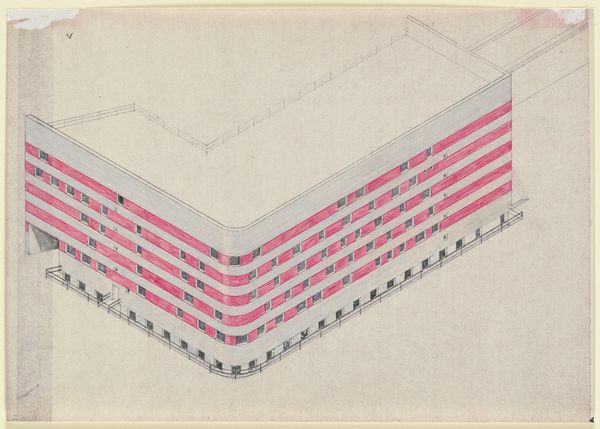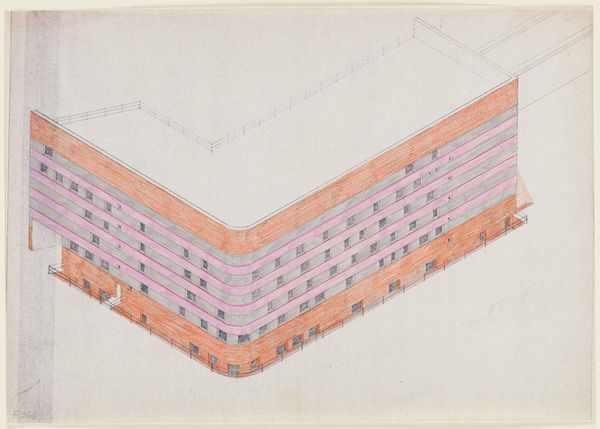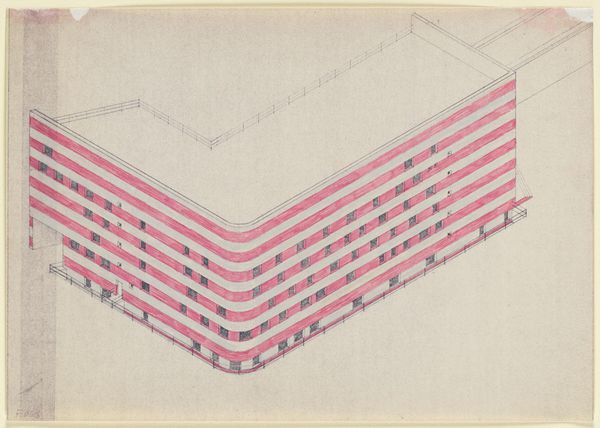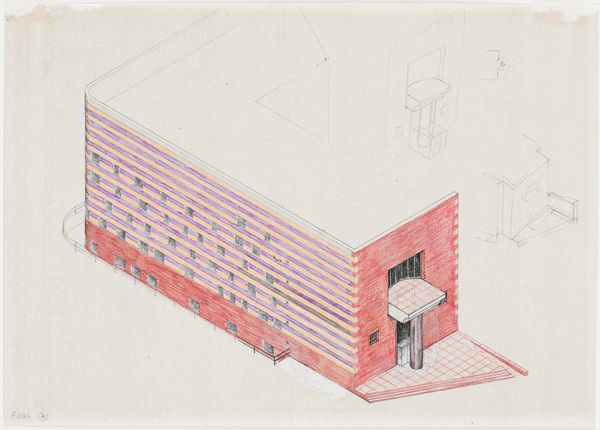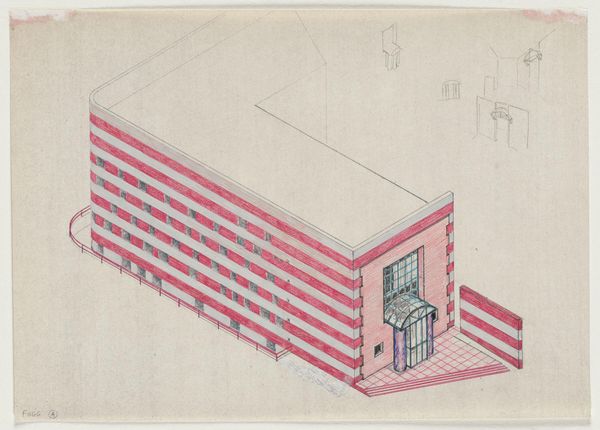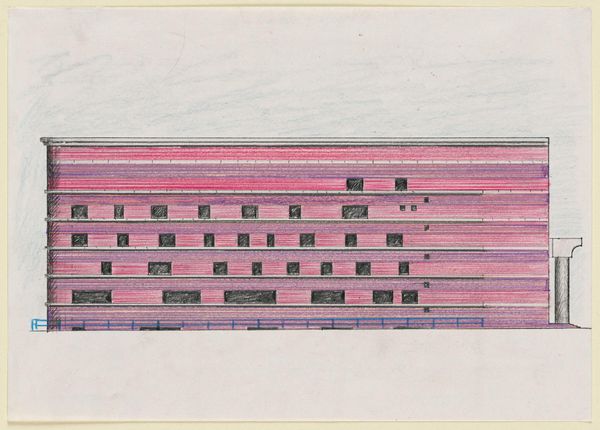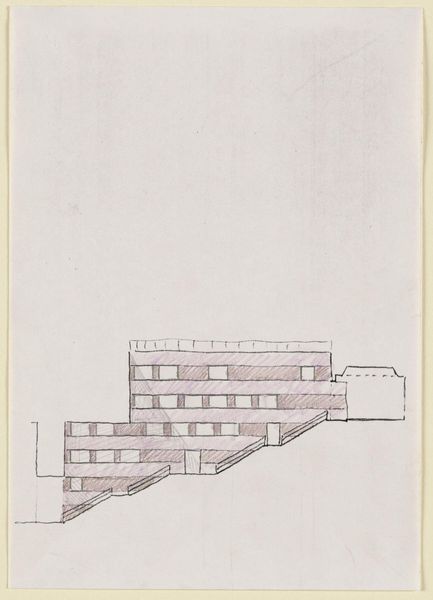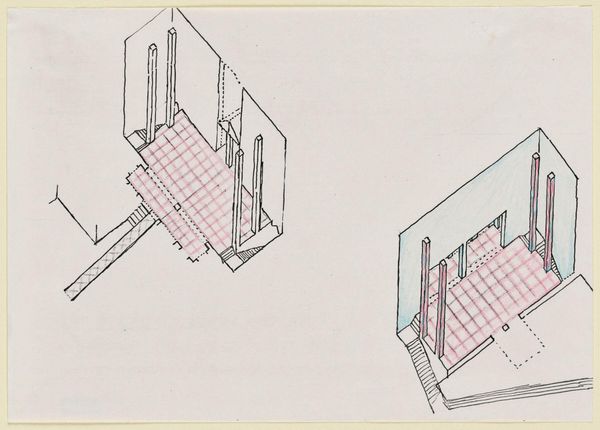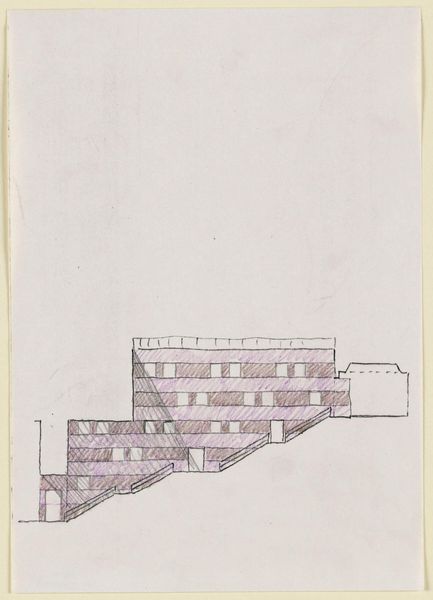
Drawing for the Arthur M. Sackler Museum, Axonometric Color Study for Cambridge and Quincy Street Elevations c. 20th century
0:00
0:00
Dimensions: 29.6 x 42 cm (11 5/8 x 16 9/16 in.)
Copyright: CC0 1.0
Curator: This is James Stirling's "Drawing for the Arthur M. Sackler Museum, Axonometric Color Study for Cambridge and Quincy Street Elevations." Editor: My first impression is the dominance of linear form. The parallel red bands rhythmically segment the building’s facade, a striking visual statement. Curator: Indeed, the color study reveals Stirling's engagement with materiality. The red bands, perhaps indicative of brick, are crucial in understanding the building's eventual construction and how its appearance was meticulously planned. Editor: But these simple red bands do more than indicate material; they dictate the entire visual field! Their repetition flattens the perspectival depth, creating a dynamic tension between two and three dimensions. Curator: This tension mirrors the building's context. Stirling's design sought to reconcile the monumental demands of a museum with the urban fabric of Cambridge. The materials used and their presentation address this. Editor: The drawing embodies an architectural concept! Its semiotic play with line, color, and form makes it an engaging piece of visual rhetoric. Curator: Precisely, and by studying the drawing’s medium and method, we gain insight into the building's socio-historical situation. Editor: Right, the power of simple lines.
Comments
No comments
Be the first to comment and join the conversation on the ultimate creative platform.

